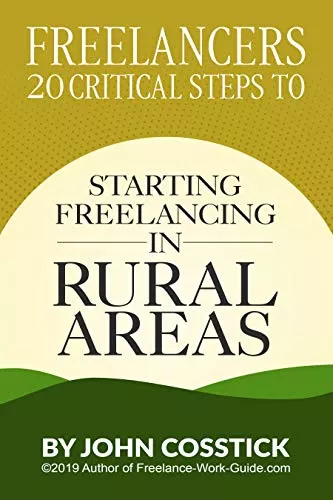As a freelancer, one of the most challenging aspects of your business is determining how much to charge for your services. Setting the correct freelance rates and pricing strategies is essential for the success of your business. Charge too much, and you may lose potential clients; charge too little and undervalue your skills and time.

In this beginner’s guide to freelance rates and pricing, we’ll cover everything you need to know to set your rates effectively. From understanding different pricing models to factors that affect your rates, we’ll help you determine the best strategy for your business. We’ll also provide tips for negotiating rates and managing your finances, so you can focus on delivering high-quality work for your clients.
By the end of this guide, you’ll clearly understand how to set your freelance rates and pricing strategies to help your business thrive.
Understanding Freelance Rates and Pricing
As a freelancer, understanding the different rates and pricing models is crucial in determining how much to charge for your services. Here are the three primary pricing models that freelancers typically use: Hourly rate pricing, Project-based pricing, Value-based pricing.
Each pricing model has advantages and disadvantages, and different models may work better for other projects or clients. Therefore, it’s essential to consider which pricing model will work best for you based on your skills, experience, and the needs of your clients.
Factors that affect your freelance rates include your level of experience, your niche, your geographic location, your competition, and the complexity of the project. Therefore, it’s important to research industry standards and understand what other freelancers in your niche charge to ensure you’re pricing your services competitively.
Understanding these factors and pricing models can help you determine the correct rates for your freelance services and build a successful business.

Different Pricing Strategies for Freelancers
There are several pricing strategies that freelancers can use to determine how much to charge for their services. Here are the three primary pricing strategies that are commonly used:
Hourly Rate Pricing
This pricing model involves charging a specific hourly rate for your work. When using this pricing strategy, it’s essential to determine an appropriate hourly rate that considers your experience, industry standards, and the project’s complexity. You should also factor in additional expenses, such as taxes, overhead, and equipment costs.
Hourly rate pricing is a common pricing strategy used by many freelancers. Here are some pros and cons to consider when using this pricing strategy:
Pros
Easy to calculate: Hourly rate pricing is straightforward because you charge a specific hourly rate for your work. This can be helpful for clients who want to know exactly how much they’ll be charged for your services.
Fair compensation: Hourly rate pricing ensures you’re paid fairly for your time on a project. This can be especially important if the project is more complex and requires additional time and effort.
Flexibility: Hourly rate pricing allows flexibility if a project takes longer than expected or additional work is required. You can charge for the extra time and work, ensuring you’re compensated for your efforts.
Cons
It can be difficult to predict costs: Since hourly rates can vary depending on the project’s complexity and your level of experience, it can be difficult to predict the total cost of a project. This can make it challenging for clients to budget and plan accordingly.
Can incentivize slow work: Hourly rate pricing can incentivize slow work, as the longer you work on a project, the more you get paid. This can be problematic if the client has a tight deadline or needs the work completed quickly.
May not reflect value: Hourly rate pricing may not accurately reflect the value you provide to the client. If you can complete a project quickly and efficiently, you may not be compensated appropriately for the value you provide.
Overall, hourly rate pricing can be a helpful pricing strategy for freelancers, but it’s essential to consider the potential pros and cons before using this pricing model.
Project-Based Pricing
With project-based pricing, you charge a flat fee for the entire project, regardless of how many hours you take to complete it. This pricing model is beneficial when working on projects with a clear scope and defined deliverables. However, it’s essential to consider the complexity of the project and any potential additional expenses when determining the project fee.
Project-based pricing is a pricing strategy in which freelancers charge a flat fee for the entire project, regardless of how many hours it takes to complete. Here are some pros and cons of using this pricing strategy:
Pros:
Predictable costs: With project-based pricing, the project’s cost is fixed so clients can budget accordingly. This can be helpful for clients who want to know how much they’ll be charged for your services.
Incentivizes efficiency: With project-based pricing, the incentive is to complete the project quickly and efficiently rather than to spend more time on it. This can benefit clients who need the work completed by a specific deadline.
Provides clarity: Project-based pricing offers clarity and transparency for you and your client. You can define the scope of the project and the deliverables upfront, ensuring that both parties are clear on what’s expected.
Cons
Difficult to estimate: Estimating the time and resources required to complete a project can be challenging, especially if it’s complex. This can make it difficult to set an appropriate project fee that accurately reflects the time and effort required.
May not reflect value: Project-based pricing may not accurately reflect the value you provide to the client. If the project requires more time and effort than initially estimated, you may not be compensated appropriately for the value you provide.
Limited flexibility: Project-based pricing may only allow for a bit of flexibility if the scope of the project changes or additional work is required. It’s essential to ensure that the project scope is clearly defined upfront to avoid misunderstandings.
Project-based pricing can be a helpful pricing strategy for freelancers, but it’s essential to consider the potential pros and cons before using this pricing model.
Value-Based Pricing
By understanding the different pricing strategies available and determining which ones work best for your business, you can set appropriate rates for your services and build a successful freelance career.
Value-based pricing involves setting your rates based on the value that you provide to the client. With this pricing strategy, you should understand the client’s business goals and objectives to ensure that you can deliver a specific outcome or result that has value to the client. In addition, value-based pricing requires effective communication and negotiation skills to ensure the client understands your services’ importance.
It’s important to note that each pricing strategy has advantages and disadvantages, and different methods may work better for various projects or clients. Additionally, it’s crucial to consider industry standards and what other freelancers in your niche charge to ensure you’re pricing your services competitively.
Value-based pricing is a pricing strategy in which freelancers set their rates based on the value they provide to their clients rather than on the time they spend on a project.
Here are some pros and cons of using this pricing strategy:
Pros
Rewards expertise: Value-based pricing rewards freelancers for their knowledge and the value they bring to the client rather than solely on the number of hours worked. This can be particularly beneficial for freelancers who have specialized skills or knowledge.
Aligns incentives: Value-based pricing aligns incentives between the freelancer and the client. The freelancer is incentivized to provide high-quality work that delivers value to the client, while the client is incentivized to provide straightforward project goals and expectations.
Increases revenue potential: By charging based on the value provided, freelancers can earn more than they would by charging an hourly rate. This is particularly true for projects that require specialized skills and knowledge.
Cons
Difficult to quantify: It can be challenging to quantify a freelancer’s value to a client. This can make it difficult to determine the appropriate rate to charge for a project.
Requires trust: Value-based pricing requires high trust between the freelancer and the client. The client must trust that the freelancer will deliver high-quality work that provides value, while the freelancer must trust that the client will give clear project goals and expectations.
Potential for misunderstandings: Value-based pricing can lead to misunderstandings if the client’s expectations for the project value need to be aligned with the freelancer’s understanding of the value they will provide.
Value-based pricing can be helpful for freelancers who provide specialized skills or knowledge. However, it’s essential to consider the potential pros and cons before using this pricing model and to ensure that clear project goals and expectations are established upfront.


Factors to Consider When Setting Freelance Rates
Setting freelance rates can be a complex task, and there are several factors to consider when determining what to charge for your services. Here are some key factors to consider:
- Skill level and experience: Your skill level and experience will significantly determine your freelance rates. You can charge higher rates as you gain more experience and develop new skills.
- Market demand: Your skills and services will also impact your rates. You can charge higher rates if there is high demand for your services and a shortage of skilled professionals in your field.
- Industry standards: It’s important to research industry standards for freelance rates in your field to ensure you’re charging a fair and competitive rate.
- Cost of living: Living in your area will also impact your rates. Freelancers in high-cost-of-living regions may need to charge higher rates to make a living wage.
- Project complexity: The project’s complexity will also impact your rates. More complex projects may require additional time and effort, which may warrant a higher rate.
- Time commitment: The amount of time you’ll need to commit to a project will also impact your rates. If a project requires a significant time commitment, you may charge higher rates to compensate for your time.
- Client budget: It’s essential to consider your client’s budget when setting your rates. Charging rates that are too high may make it difficult to win clients, while charging rates that are too low may need to be higher to value your services.
By considering these factors, you can set fair and competitive freelance rates that accurately reflect the value of your services.
Tips for Negotiating Freelance Rates
Negotiating freelance rates can be challenging, but with some preparation and communication skills, you can negotiate fair rates that work for you and your client. Here are some tips for negotiating freelance rates:
- Research industry standards: Before negotiating rates with a client, research industry standards for your field. This will give you an idea of what is a fair and competitive rate to charge.
- Know your worth: Understand the value of your services and the experience and expertise you bring to the table. This will help you confidently communicate your rates to clients.
- Consider your costs: Factor in your business costs, such as taxes, software, and equipment, when determining your rates. You need to ensure that your rates will cover all your business expenses and allow you to make a profit.
- Be transparent: Be transparent with your clients about your rates and what they include. Explain how you calculate your rates and be clear about what is and is not included in your pricing.
- Be flexible: Be open to negotiation and relaxed in your rates, but take your services seriously. For example, consider offering a discount for larger projects or long-term clients.
- Focus on the value: Emphasize your importance to the project and how your services will benefit the client. This can help justify your rates and make the negotiation process smoother.
- Negotiate in writing: Once you and the client agree, document the agreed-upon rates and scope of work in a written agreement or contract.
Following these tips, you can negotiate fair and competitive freelance rates that work for you and your clients.
How to Communicate With Clients About Rates
Communicating with clients about rates can be a delicate process, but it’s essential to establish clear expectations upfront. Here are some tips for effectively communicating with clients about rates:
Be transparent: Be upfront and okay with your rates and the value you provide. Provide a breakdown of your rates, including any additional fees or expenses. This will help your clients understand your pricing structure and what they can expect to pay.
Ask about their budget: Ask clients about their budget upfront. This can help you understand their financial constraints and tailor your rates and services accordingly.
Highlight your value: Emphasize the importance you provide and the benefits of working with you. Please explain how your services will help them achieve their goals and solve their problems. This can help justify your rates and demonstrate why working with you is worth the investment.
Negotiate in good faith: Be open to negotiation and willing to find a compromise that works for both you and the client. This can help build a positive working relationship and establish trust.
Please put it in writing: Once you and the client agree on the rates, the scope of work, and the timeline, write it in a contract or agreement. This will help avoid misunderstandings and protect both you and the client.
Communicate regularly: Regularly communicate with your clients throughout the project. This can help build trust, ensure everyone is on the same page, and avoid any surprises at the end of the project.

Managing Freelance Finances
Managing freelance finances is an essential aspect of running a successful freelance business. Here are some tips for managing your freelance finances:
- Separate personal and business finances: Keeping your personal and business finances separate is essential. Open a separate bank account and credit card for your business expenses.
- Create a budget: Create a budget that considers your business expenses, such as rent, utilities, software, equipment, and taxes. Make sure your rates cover all your business expenses and leave room for profit.
- Track your income and expenses: Keep track of your income and expenses using a spreadsheet, bookkeeping software, or hiring an accountant. This will help you stay organized, prepare for tax season, and identify any areas where you can cut costs.
- Invoice regularly: Create and send invoices promptly to ensure you get paid on time. Use professional invoicing software to help streamline the process.
- Save for taxes: Set aside a portion of your income for taxes, as you’ll be responsible for paying both income and self-employment taxes. You can also work with an accountant to estimate your tax liability and adjust your rates accordingly.
- Plan: Set aside money for emergencies, retirement, and future business investments.
- Review your finances regularly: Review your finances regularly to identify any areas where
you can improve your profitability, cut costs, or increase your rates.
Following these tips, you can manage your freelance finances and run a successful business.
FAQ:
Q1: How do I determine my freelance rates?
Ans: Freelance rates can be determined by considering factors such as your experience, skills, industry standards, and the value you bring to clients. You can also research rates in your industry and geographic location to ensure you charge competitive rates.
Q2: What are the most common pricing strategies for freelancers?
Ans: The most common pricing strategies for freelancers are hourly, project-based, and value-based rates.
Q3: How do I negotiate rates with clients?
Ans: When negotiating rates with clients, you must be confident in the value you bring to the project, know your bottom line, and be open to compromise. Effective communication and establishing clear expectations can also help ensure a successful negotiation.
Q4: How do I manage my freelance finances?
Ans: To manage your freelance finances, you can separate personal and business finances, create a budget, track income and expenses, invoice regularly, save for taxes, plan for the future, and review finances regularly. Working with an accountant or bookkeeper can help you stay on track with your finances.
Q5: How can I ensure that my rates are competitive?
Ans: You can ensure your rates are competitive by researching rates in your industry and geographic location. You can also network with other freelancers or industry professionals to gain insight into typical rates. Consider your experience, skills, and the value you bring to clients when determining your rates.
Q6: What should I do if a client doesn’t want to pay my rates?
Ans: If a client does not want to pay your rates, it’s essential to be prepared to negotiate. Be confident in the value you bring to the project and consider any compromises you may be willing to make. If the client still needs to be ready to pay your rates, walking away from the project may be best.
Q7: How should I handle late payments from clients?
Ans: To handle late payments from clients, it’s essential to establish clear payment terms upfront, such as when invoices are due and any penalties for late payments. Follow up promptly if a payment is late and consider sending a friendly reminder or late payment fee if necessary. If payment is significantly overdue, consider seeking legal assistance.
Q8: How can I improve my freelance finances?
Ans: You can improve your freelance finances by regularly reviewing your income and expenses, identifying areas where you can cut costs or increase your rates, and planning for the future. Setting financial goals and working with an accountant or financial advisor can also ensure you are on track for long-term financial success.
Conclusion
In conclusion, understanding how to set rates and manage finances is crucial for a successful freelance business. Freelancers need to consider pricing strategies, factors affecting rates, and effective communication with clients when discussing rates. Additionally, managing freelance finances requires separating personal and business finances, creating a budget, tracking income and expenses, invoicing regularly, saving for taxes, planning for the future, and periodically reviewing finances.
By implementing these strategies, freelancers can earn an adequate income, manage expenses, and position themselves for long-term success. Freelancing can be a rewarding and lucrative career path with the right approach.

Reference: 405 Freelance Statistics for 2023: Market Size, Profile Data & Salary Rates














